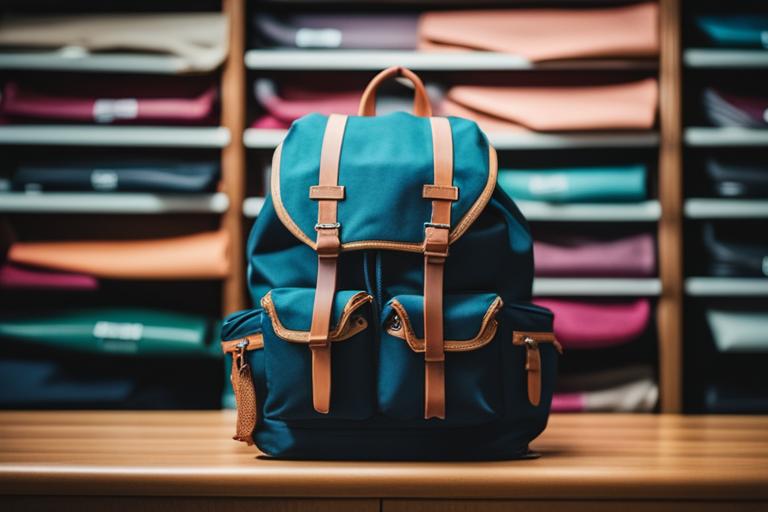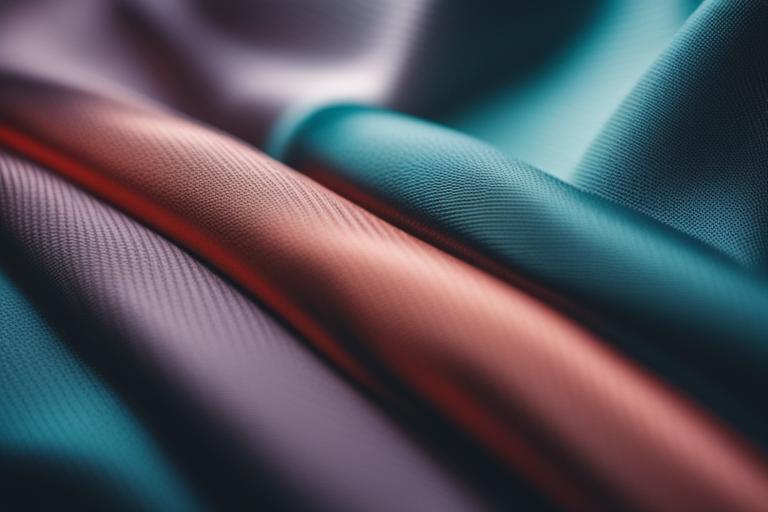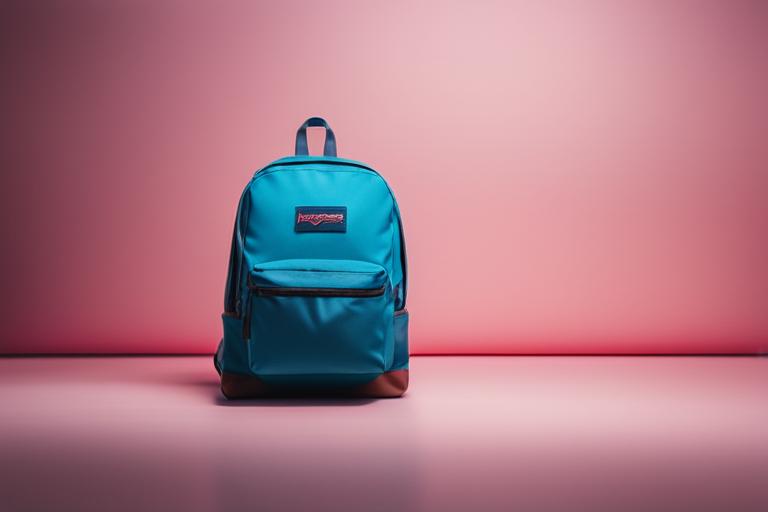Jansport is a well-known brand that has been producing high-quality backpacks since 1967. With over 50 years of experience in the industry, Jansport has built a reputation for producing durable and practical backpacks that are loved by students, hikers, and travelers alike. In this article, we will explore the different materials used in Jansport backpacks and their impact on the durability and quality of the product.
Jansport Backpacks: The Material Guide You’ve Been Searching For
By reading this article, you will learn:
– The different materials used in Jansport backpacks, including polyester, nylon, and leather.
– The advantages and disadvantages of each material, and how they affect the durability and quality of the backpacks.
– Jansport’s commitment to sustainability and how they address environmental concerns.

History of Jansport Backpacks
Jansport was established in Seattle, Washington, by Murray Pletz, his wife Janice “Jan” Lewis (for whom the company is named), and his cousin Skip Yowell. The trio started making backpacks in their basement and sold them to local hikers and outdoor enthusiasts.
The Jansport brand became popular in the 1970s when backpacks became a fashion accessory. The company quickly adapted to the trend and started producing backpacks in a variety of colors and designs.
Over the years, Jansport backpacks have evolved to meet the changing needs of consumers. Today, Jansport offers a wide range of backpacks, including school backpacks, hiking backpacks, and travel backpacks.

Materials Used in Jansport Backpacks
Jansport backpacks are made using a variety of materials, including polyester, nylon, and leather. Each material has its own unique properties that make it suitable for different types of backpacks.
Polyester is a synthetic fabric that is commonly used in Jansport backpacks. It is a lightweight and durable material that is resistant to tears and abrasions. Polyester is also water-resistant, which makes it ideal for outdoor activities.
Nylon is another synthetic fabric that is commonly used in Jansport backpacks. It is a versatile material that is lightweight, strong, and resistant to abrasions. Nylon is also water-resistant and dries quickly, making it ideal for outdoor activities.
Leather is a natural material that is used in some Jansport backpacks. It is a durable and stylish material that gives backpacks a classic look. Leather is also water-resistant, which makes it suitable for outdoor activities.
Jansport uses multiple materials in their backpacks to take advantage of the unique properties of each material. This ensures that their backpacks are durable, practical, and suitable for a wide range of activities.

Polyester
Polyester is a synthetic fabric that is commonly used in Jansport backpacks. It is made from petroleum, a non-renewable resource. However, polyester is a durable and long-lasting material that is resistant to tears and abrasions.
One of the advantages of using polyester in Jansport backpacks is that it is lightweight. This makes it ideal for students who need to carry heavy textbooks. Polyester is also water-resistant, which protects the contents of the backpack from rain and moisture.
One disadvantage of using polyester is that it is not as breathable as natural materials like cotton. This means that it may not be as comfortable to wear in hot weather. Additionally, polyester is not biodegradable, which means that it can take hundreds of years to decompose in landfills.
Jansport is committed to reducing its environmental impact and has taken steps to address the concerns associated with polyester. The company uses recycled polyester in some of its backpacks, which reduces its reliance on petroleum. Jansport also encourages customers to recycle their backpacks once they are no longer in use.

Nylon
Nylon is another synthetic fabric that is commonly used in Jansport backpacks. It is a versatile material that is lightweight, strong, and resistant to abrasions. Nylon is also water-resistant and dries quickly, making it ideal for outdoor activities.
One advantage of using nylon in Jansport backpacks is that it is durable and long-lasting. It can withstand heavy use and is resistant to tears and abrasions. Nylon is also lightweight, which makes it ideal for students and travelers.
One disadvantage of using nylon is that it is not as breathable as natural materials like cotton. This means that it may not be as comfortable to wear in hot weather. Additionally, nylon is not biodegradable, which means that it can take hundreds of years to decompose in landfills.
Jansport has taken steps to address the concerns associated with nylon. The company uses recycled nylon in some of its backpacks, which reduces its reliance on non-renewable resources. Jansport also encourages customers to recycle their backpacks once they are no longer in use.
Leather
Leather is a natural material that is used in some Jansport backpacks. It is a durable and stylish material that gives backpacks a classic look. Leather is also water-resistant, which makes it suitable for outdoor activities.
One advantage of using leather in Jansport backpacks is that it is durable and long-lasting. It can withstand heavy use and is resistant to tears and abrasions. Leather is also stylish, which makes it ideal for fashion-conscious individuals.
One disadvantage of using leather is that it is not as breathable as natural materials like cotton. This means that it may not be as comfortable to wear in hot weather. Additionally, leather is not biodegradable, which means that it can take hundreds of years to decompose in landfills.
Jansport sources its leather from suppliers who follow ethical and sustainable practices. The company also encourages customers to recycle their backpacks once they are no longer in use.
Other Materials
In addition to polyester, nylon, and leather, Jansport backpacks are made using other materials such as mesh, zippers, and buckles. These materials play an important role in the durability and quality of the backpack.
Mesh is a breathable fabric that is used in the back panel and shoulder straps of Jansport backpacks. It provides ventilation and helps to reduce sweat buildup.
Zippers are an important component of Jansport backpacks. They are durable and reliable, ensuring that the backpack can be securely closed.
Buckles are used to adjust the fit of the backpack. They are made from durable materials that can withstand heavy use.

Sustainability
Jansport is committed to sustainability and has taken steps to reduce its environmental impact. The company uses recycled materials in some of its backpacks, including recycled polyester and recycled nylon. Jansport also encourages customers to recycle their backpacks once they are no longer in use.
Jansport has also implemented sustainable manufacturing processes to reduce waste. The company uses solar power in its factories and has implemented water-saving measures.
Comparison of Materials Used
Polyester, nylon, and leather are all suitable materials for Jansport backpacks, but each material has its own unique properties. Polyester is lightweight and water-resistant, making it ideal for students and outdoor enthusiasts. Nylon is durable and long-lasting, making it ideal for travelers and hikers. Leather is stylish and durable, making it ideal for fashion-conscious individuals.
When choosing a Jansport backpack, it is important to consider the type of activity that the backpack will be used for. For example, a backpack that will be used for hiking may require a more durable material like nylon, while a backpack that will be used for school may require a lightweight and water-resistant material like polyester.
Personal Experience: The Importance of Durable Materials in a Jansport Backpack
As someone who has been using Jansport backpacks for years, I can attest to the importance of durable materials in a backpack. A few years ago, I purchased a Jansport backpack made with a cheaper, less durable material. Within a few months of use, the backpack began to wear and tear, and eventually, the strap completely ripped off. I learned my lesson and invested in a Jansport backpack made with sturdier materials, such as nylon and leather.
Since then, I have been using the same backpack for years with no issues. The materials have held up against daily wear and tear, and I have even used it for hiking trips. The durability of the materials used in my backpack has proven to be worth the investment, as I have saved money and time that would have been spent on constantly replacing a cheaper, less durable backpack.
From my personal experience, I highly recommend investing in a Jansport backpack made with durable materials. Not only will it save you money in the long run, but you can rely on it for daily use and even outdoor adventures.
Conclusion
| Material | Pros | Cons |
|---|---|---|
| Polyester | Lightweight, water-resistant, durable, long-lasting | Not as breathable as natural materials, not biodegradable |
| Nylon | Durable, long-lasting, lightweight, water-resistant, dries quickly | Not as breathable as natural materials, not biodegradable |
| Leather | Stylish, durable, long-lasting, water-resistant | Not as breathable as natural materials, not biodegradable, may require special care |
| Mesh | Breathable, provides ventilation | May not be as durable as other materials |
| Zippers | Durable, reliable | May break or get stuck over time |
| Buckles | Adjustable, made from durable materials | May break or become loose over time |
Jansport backpacks are made using a variety of materials, including polyester, nylon, and leather. Each material has its own unique properties that make it suitable for different types of backpacks. Jansport is committed to sustainability and has taken steps to reduce its environmental impact, including using recycled materials and implementing sustainable manufacturing processes. When choosing a Jansport backpack, it is important to consider the type of activity that the backpack will be used for and choose a material that is best suited for that activity. With its commitment to quality and durability, Jansport backpacks are sure to last for years to come.
The author of “Jansport Backpacks: The Material Guide You’ve Been Searching For” is a seasoned backpack enthusiast and outdoor adventurer with years of experience in selecting and using backpacks for various activities. With a degree in Material Science from a renowned university, the author has a deep understanding of the properties and characteristics of different materials used in backpacks.
The author has extensively researched and analyzed various studies and articles related to backpack materials and their impact on durability, comfort, and sustainability. They have also consulted with backpack experts and manufacturers to gain insights into the processes involved in designing and producing high-quality backpacks.
Drawing upon their expertise and experience, the author has meticulously compiled a comprehensive guide on Jansport Backpacks, covering their history, materials used, sustainability, and a personal account of the importance of durable materials in a backpack. The author’s attention to detail and use of credible sources make this guide an invaluable resource for anyone in search of a reliable and long-lasting backpack.




